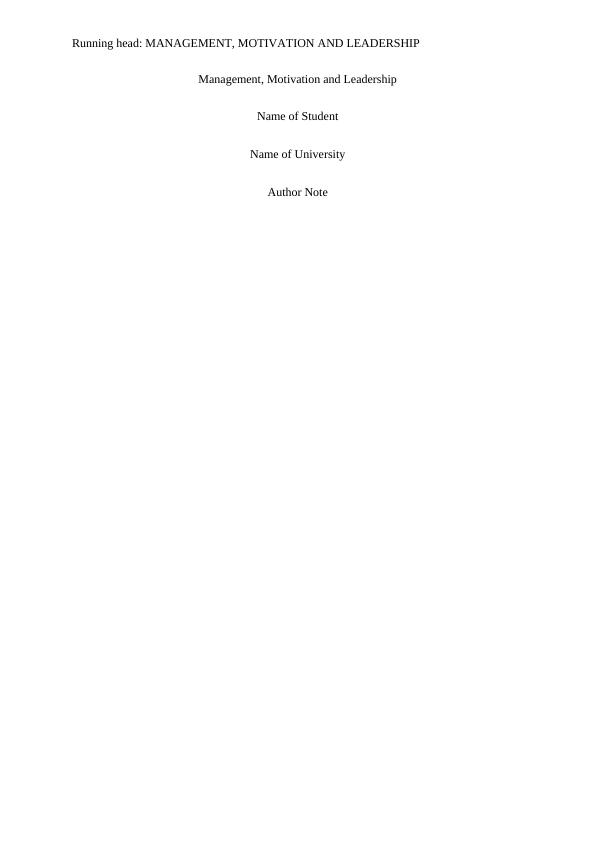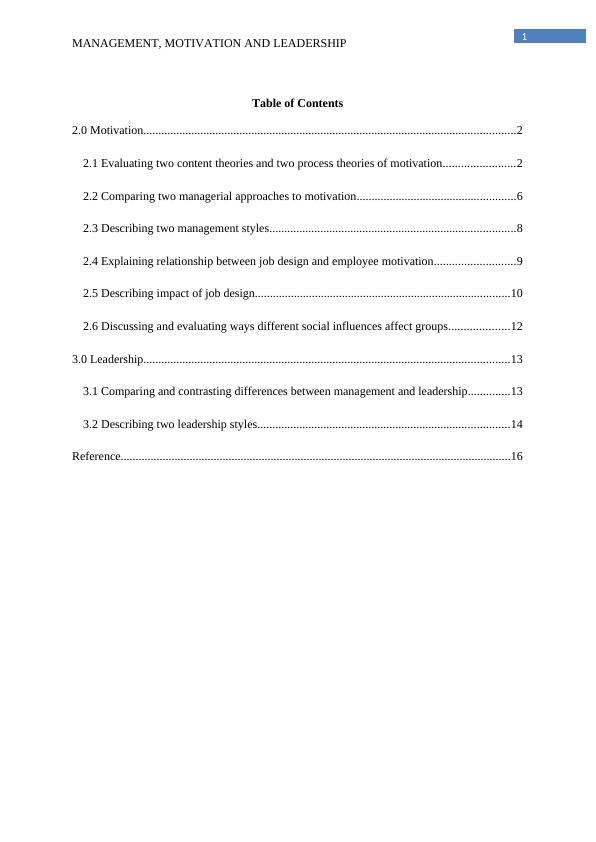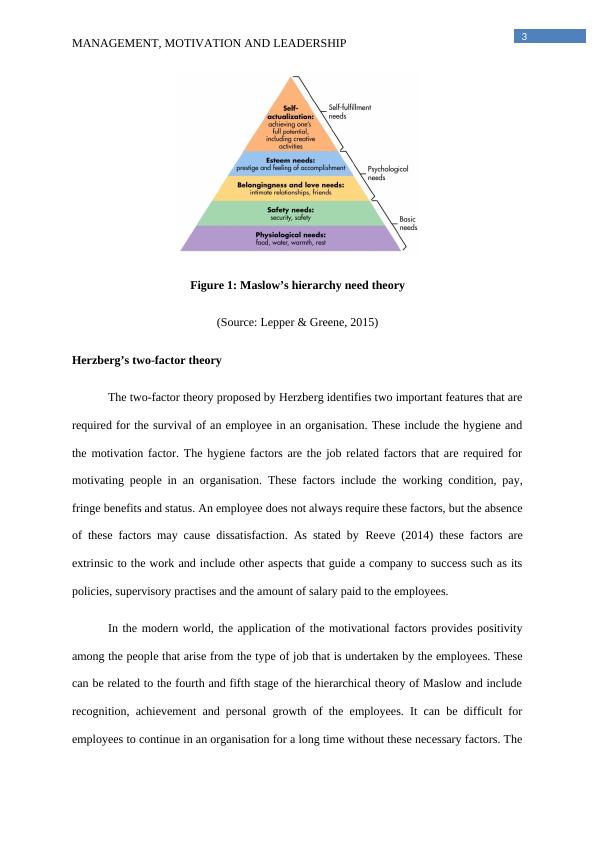Management, Motivation and Leadership - Desklib
Discuss three schools of management, two types of organizational structures, and define power, influence, and authority.
19 Pages4402 Words494 Views
Added on 2023-06-10
About This Document
This article explores the impact of management, motivation and leadership on employee productivity and job satisfaction. It covers content and process theories of motivation, managerial approaches, leadership styles, and job design. The article provides a detailed analysis of Maslow's hierarchy of needs, Herzberg's two-factor theory, reinforcement theory, and expectancy theory. It also describes the democratic and autocratic management styles and their impact on employee motivation. The article concludes by discussing the impact of job design on employee motivation and productivity.
Management, Motivation and Leadership - Desklib
Discuss three schools of management, two types of organizational structures, and define power, influence, and authority.
Added on 2023-06-10
ShareRelated Documents
End of preview
Want to access all the pages? Upload your documents or become a member.
Motivation, Reinforcement and Initiation
|7
|1642
|164
Theories of Motivation and Their Application in the Modern Workplace
|8
|2164
|294
Motivating Staff: A Comparison of Maslow's Hierarchy of Needs and Herzberg's Two-Factor Theory
|4
|890
|392
Management Assignment | Management Skills
|9
|2212
|112
Introduce to the Motivation Theory
|6
|1163
|40
Managing a Sales Team: Motivation, Performance and Staffing
|15
|2915
|475




